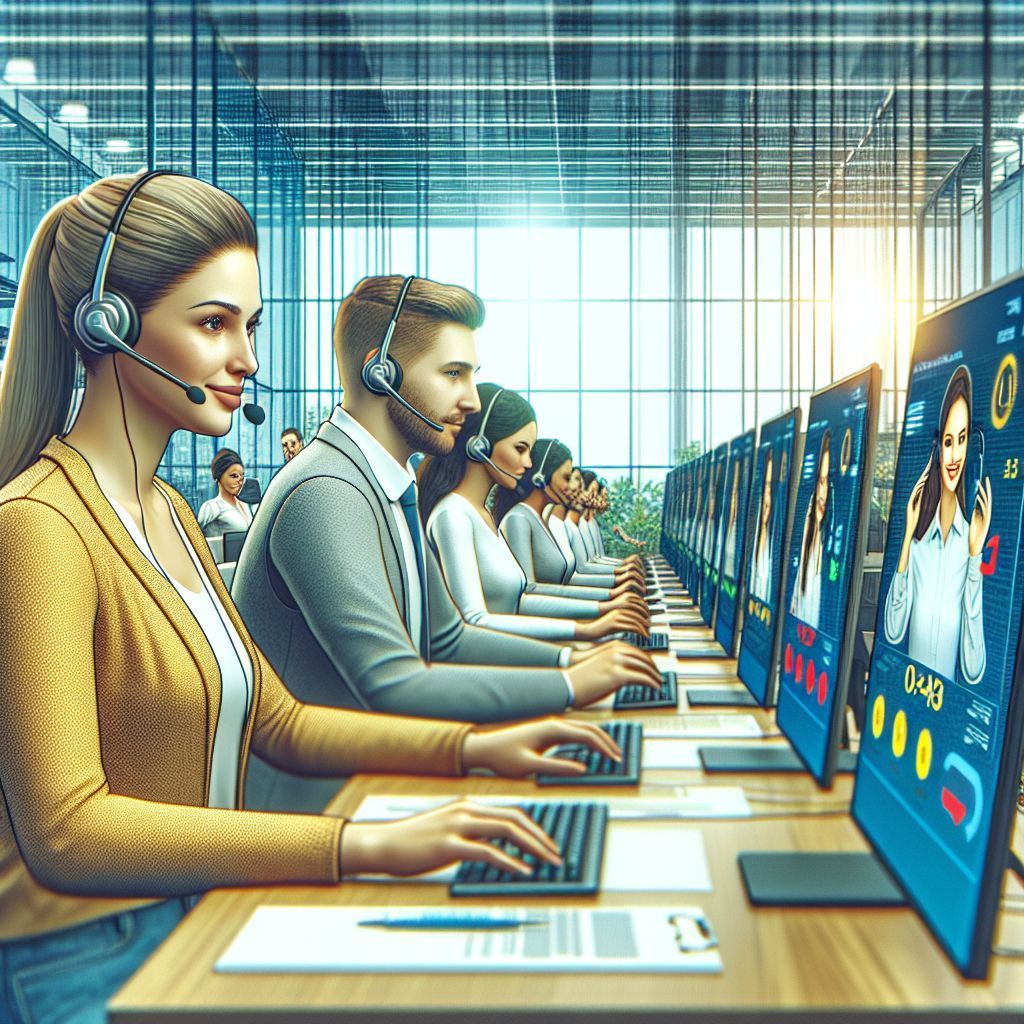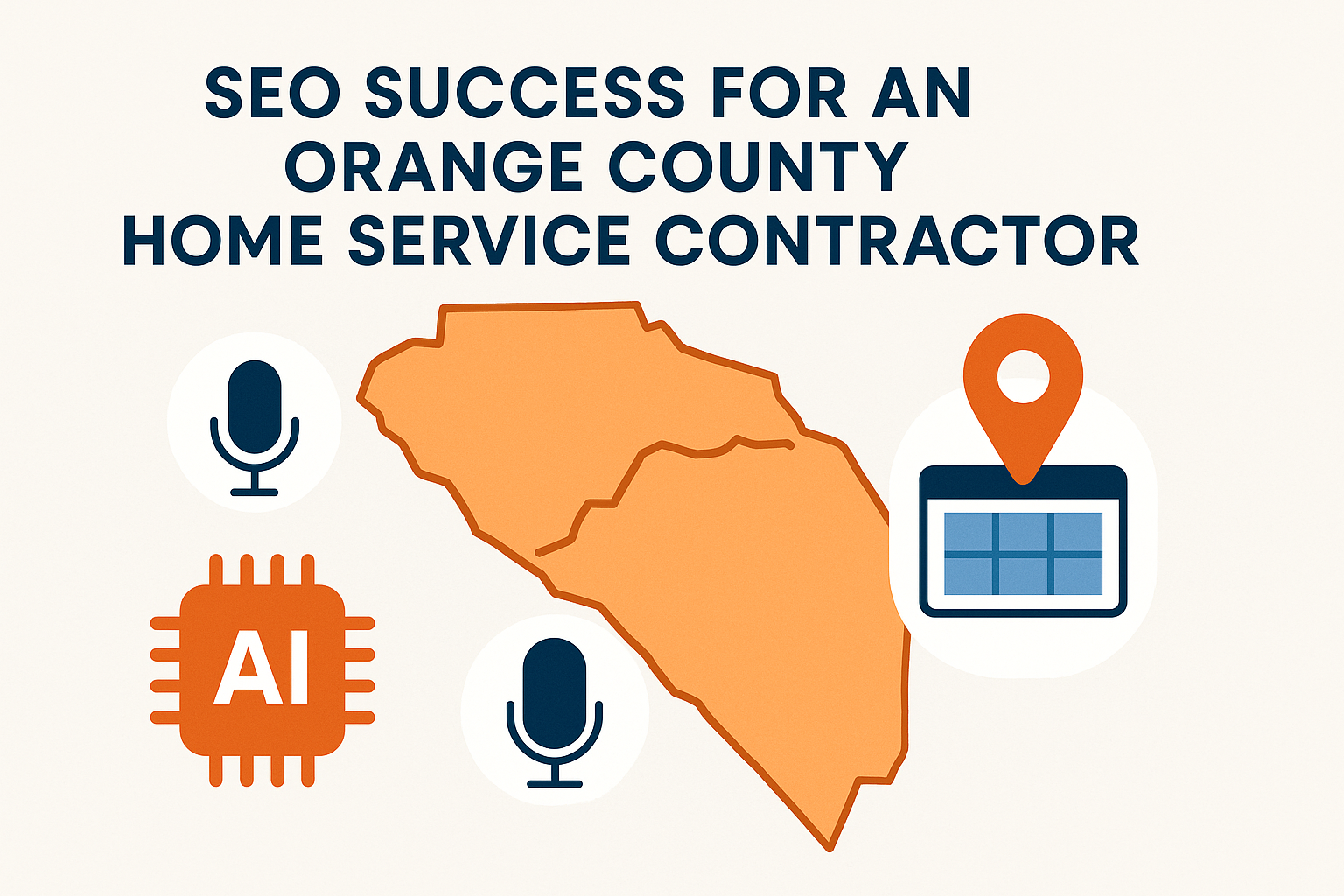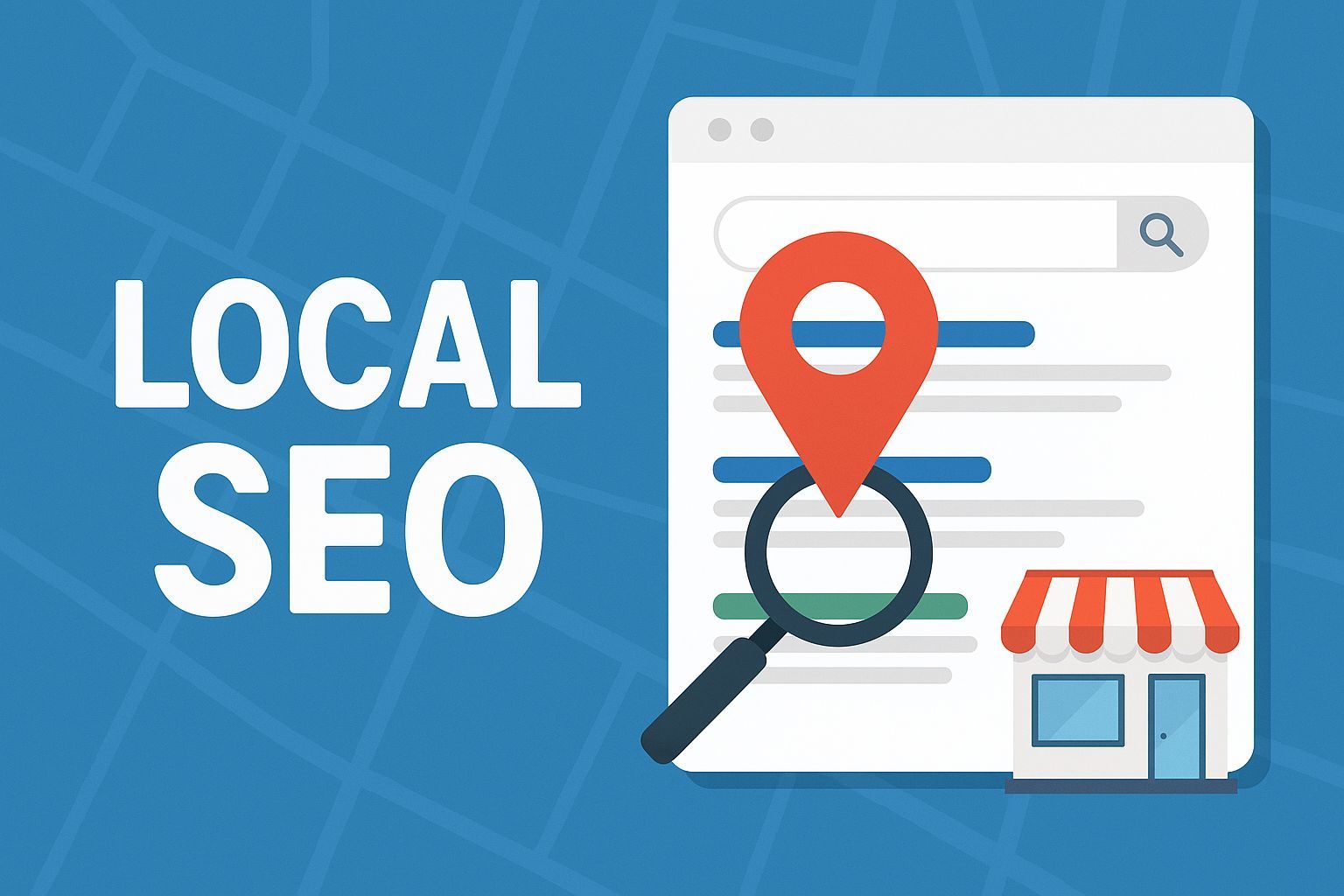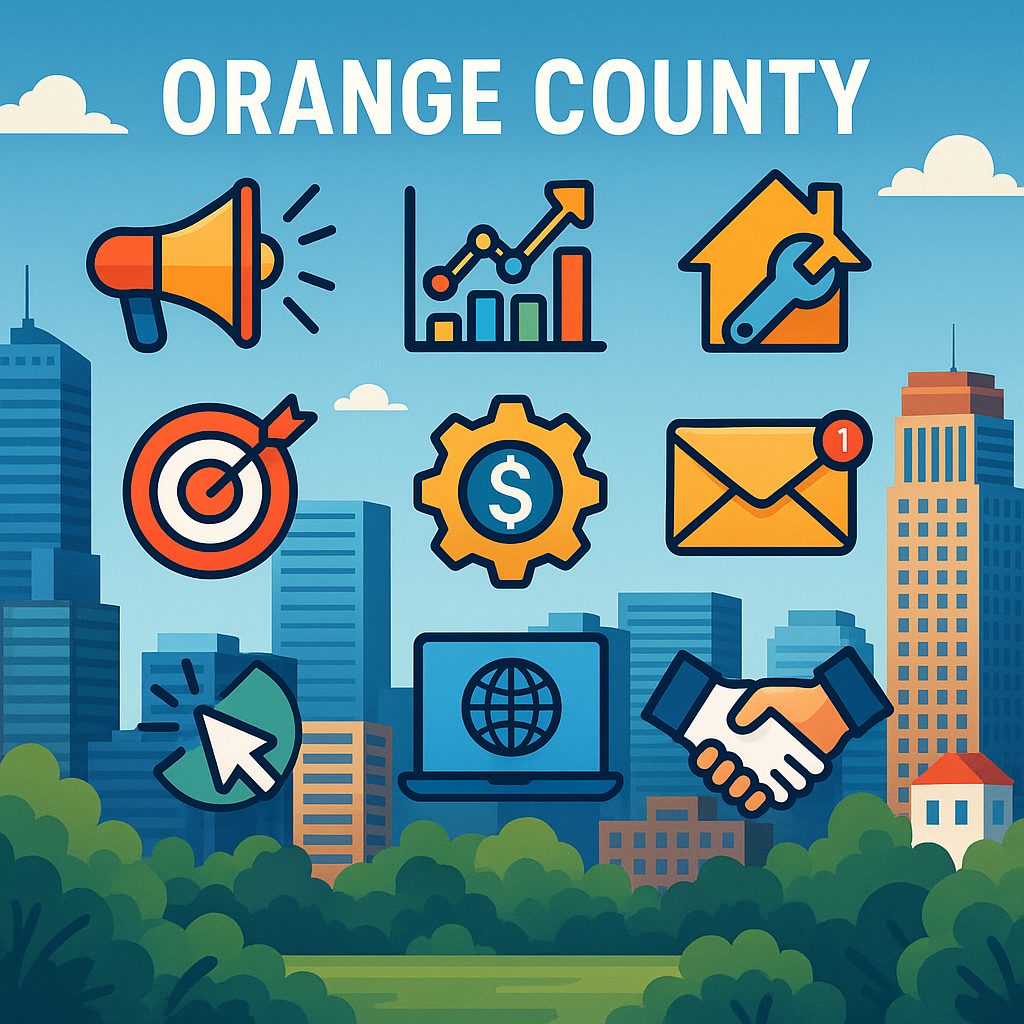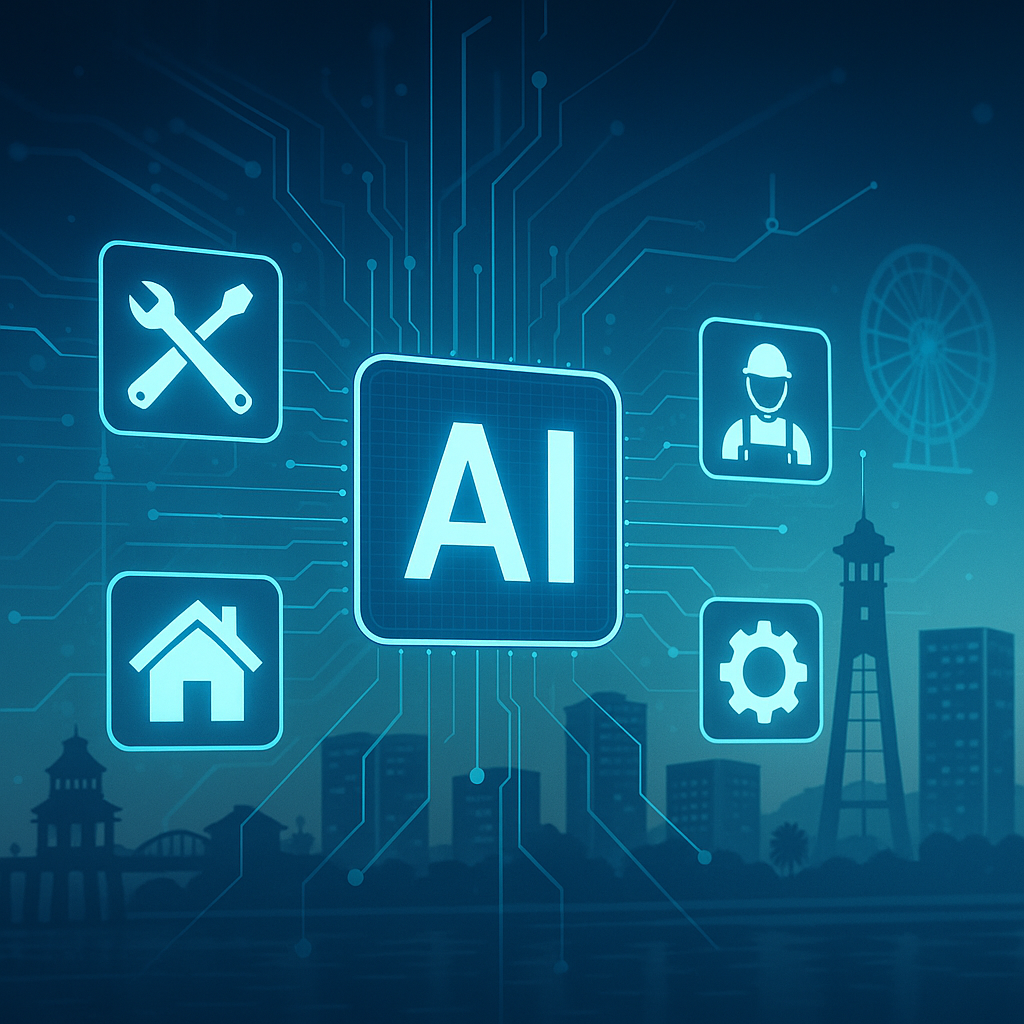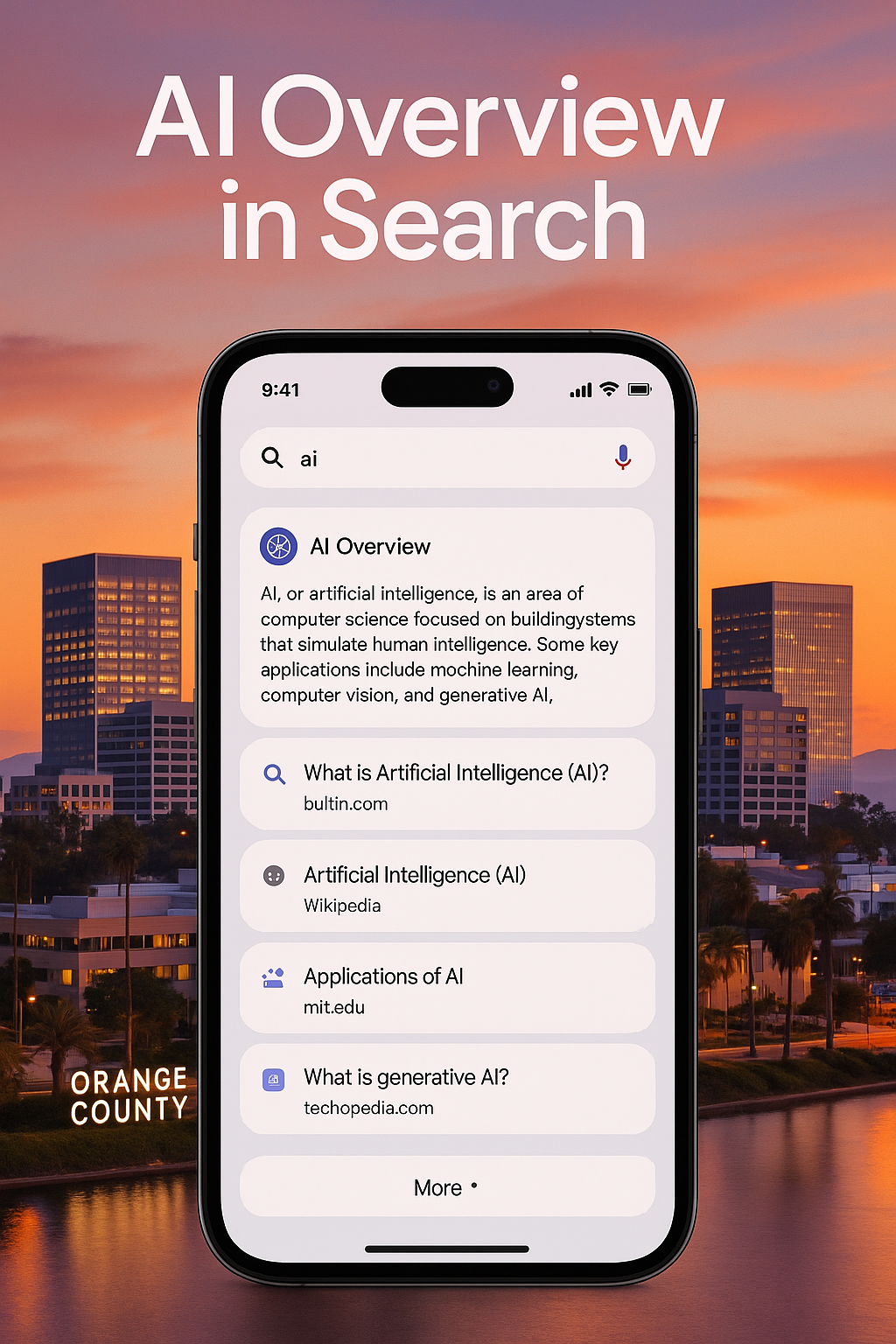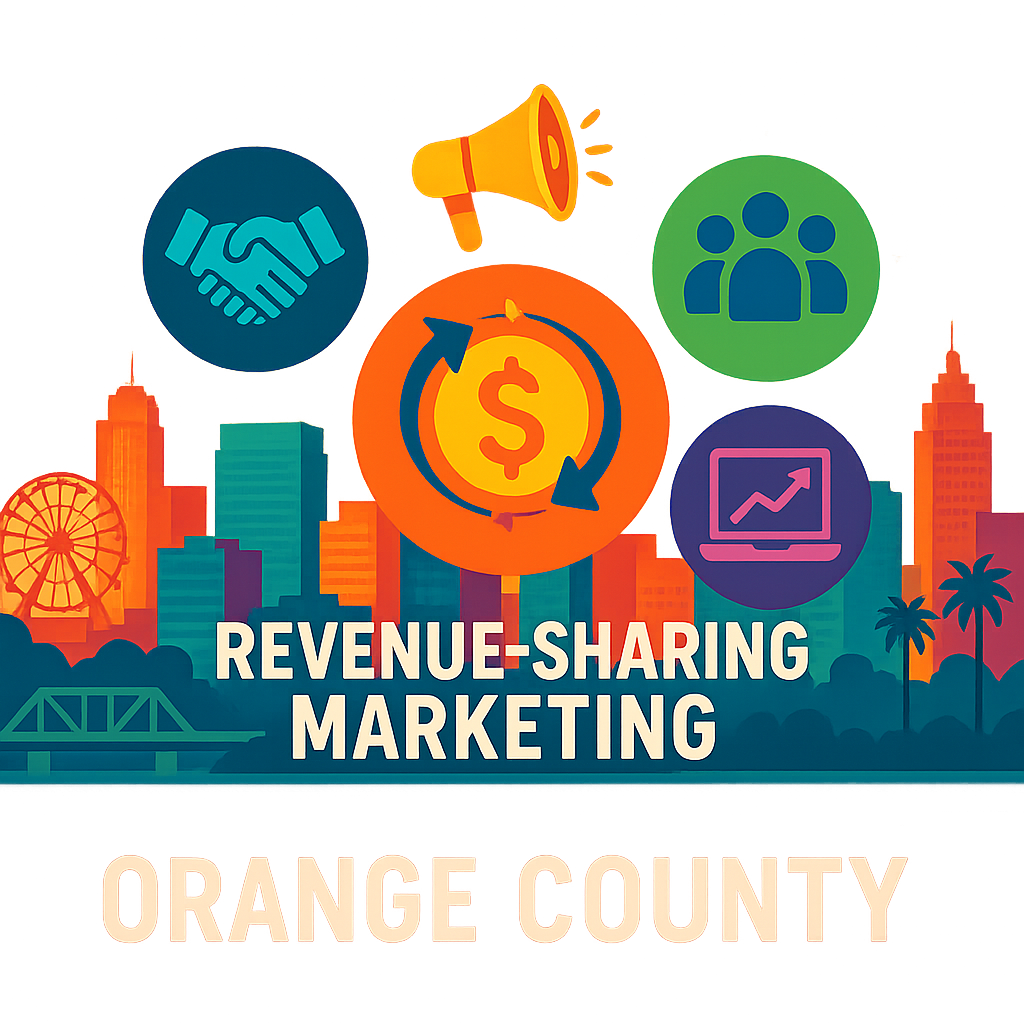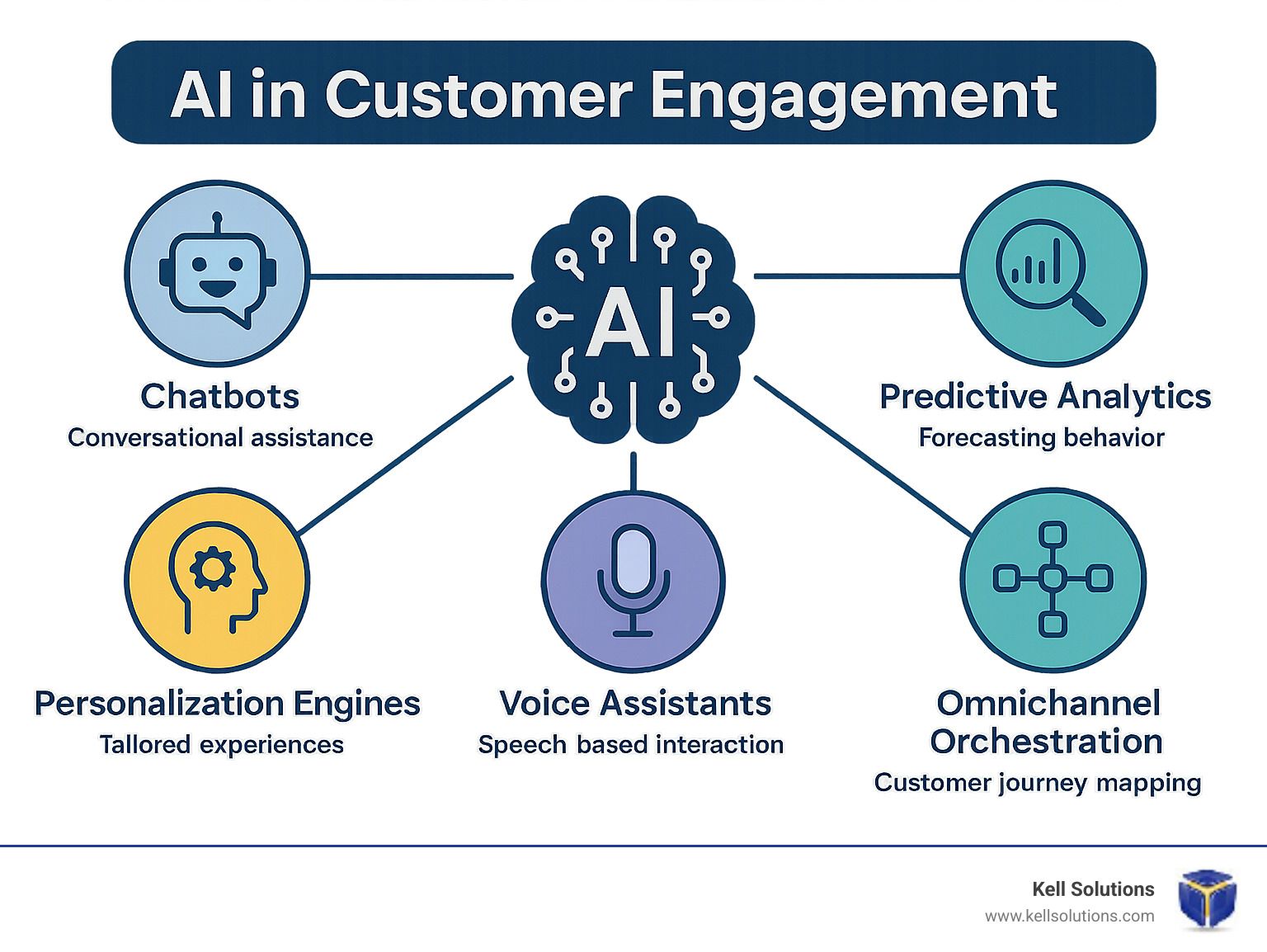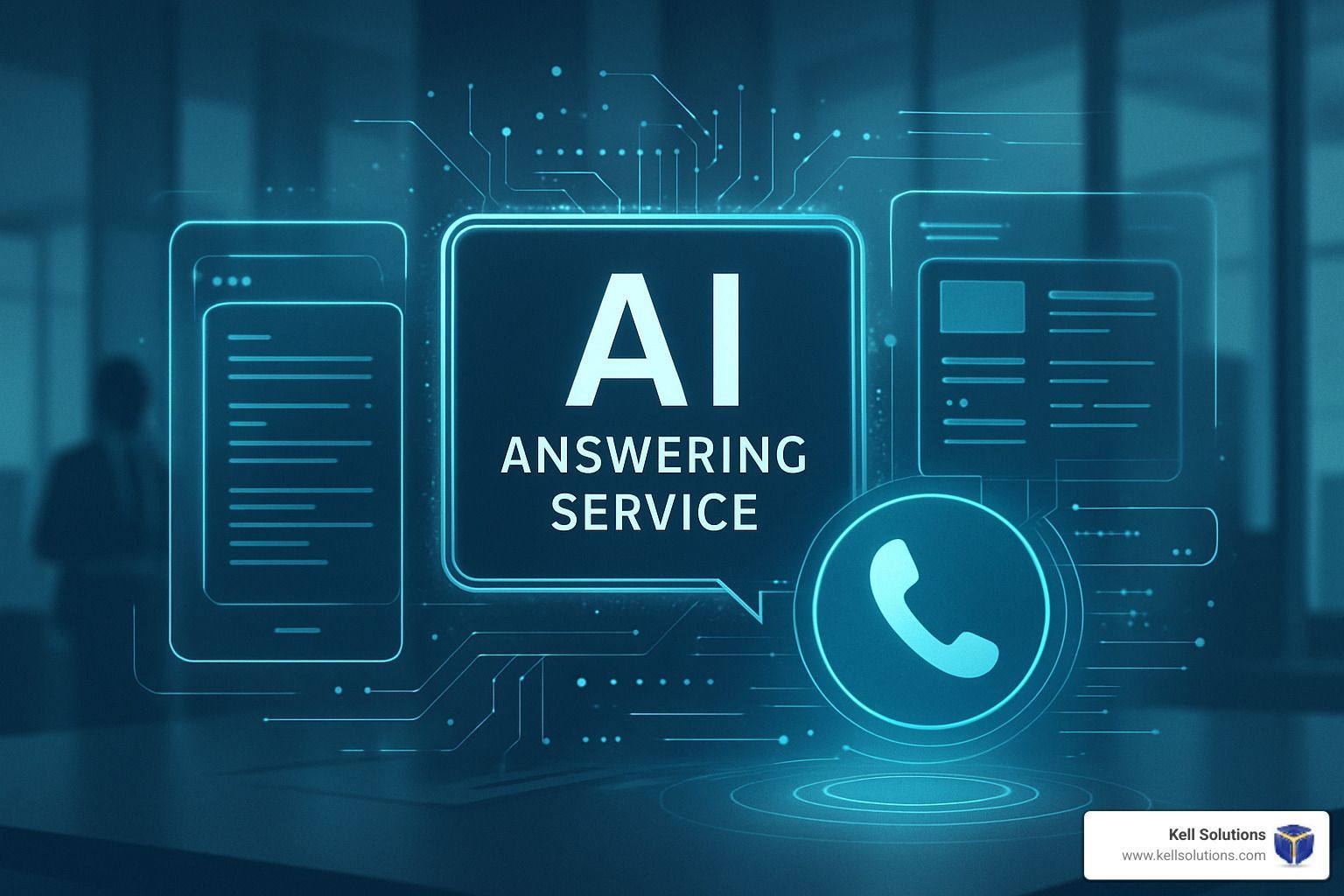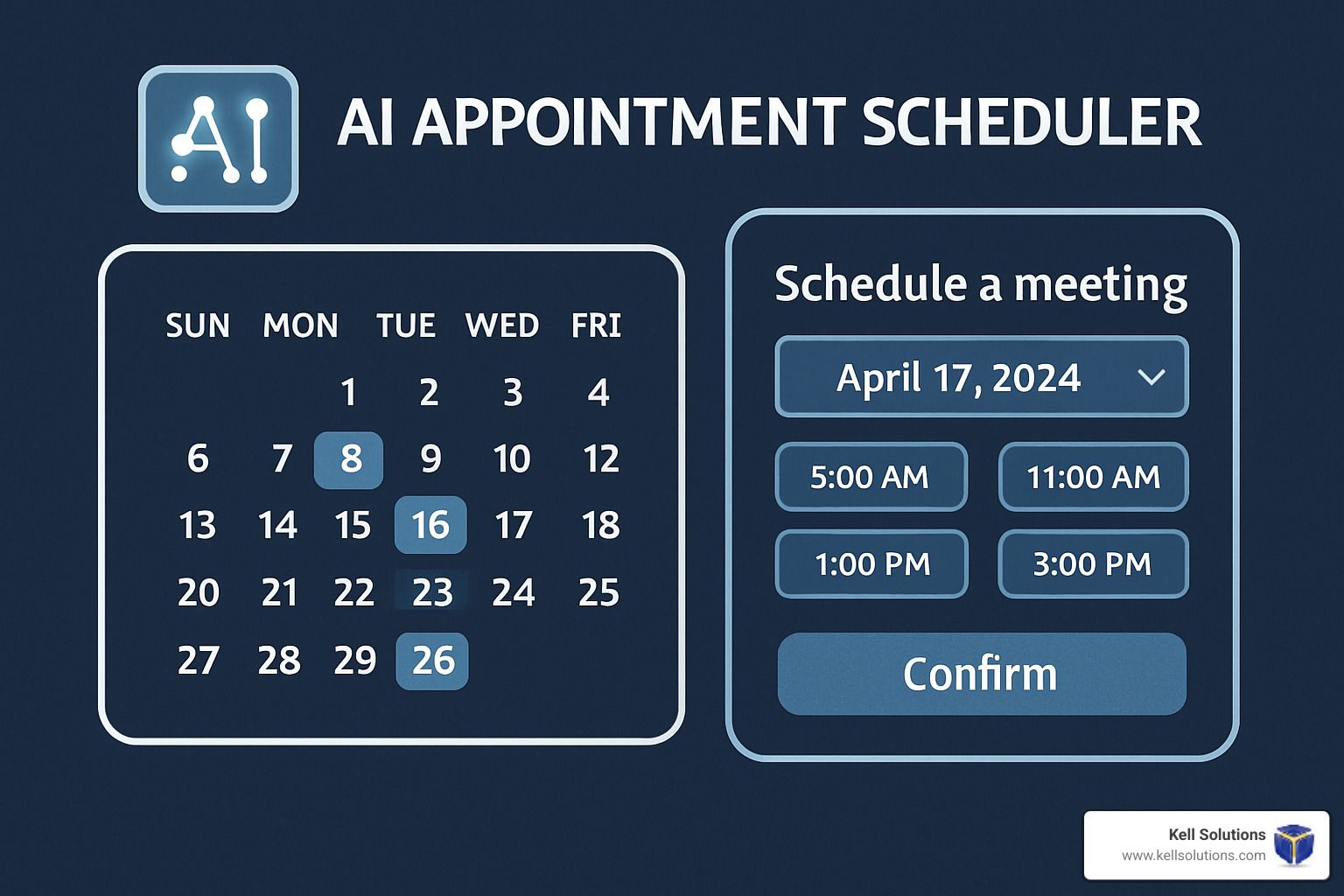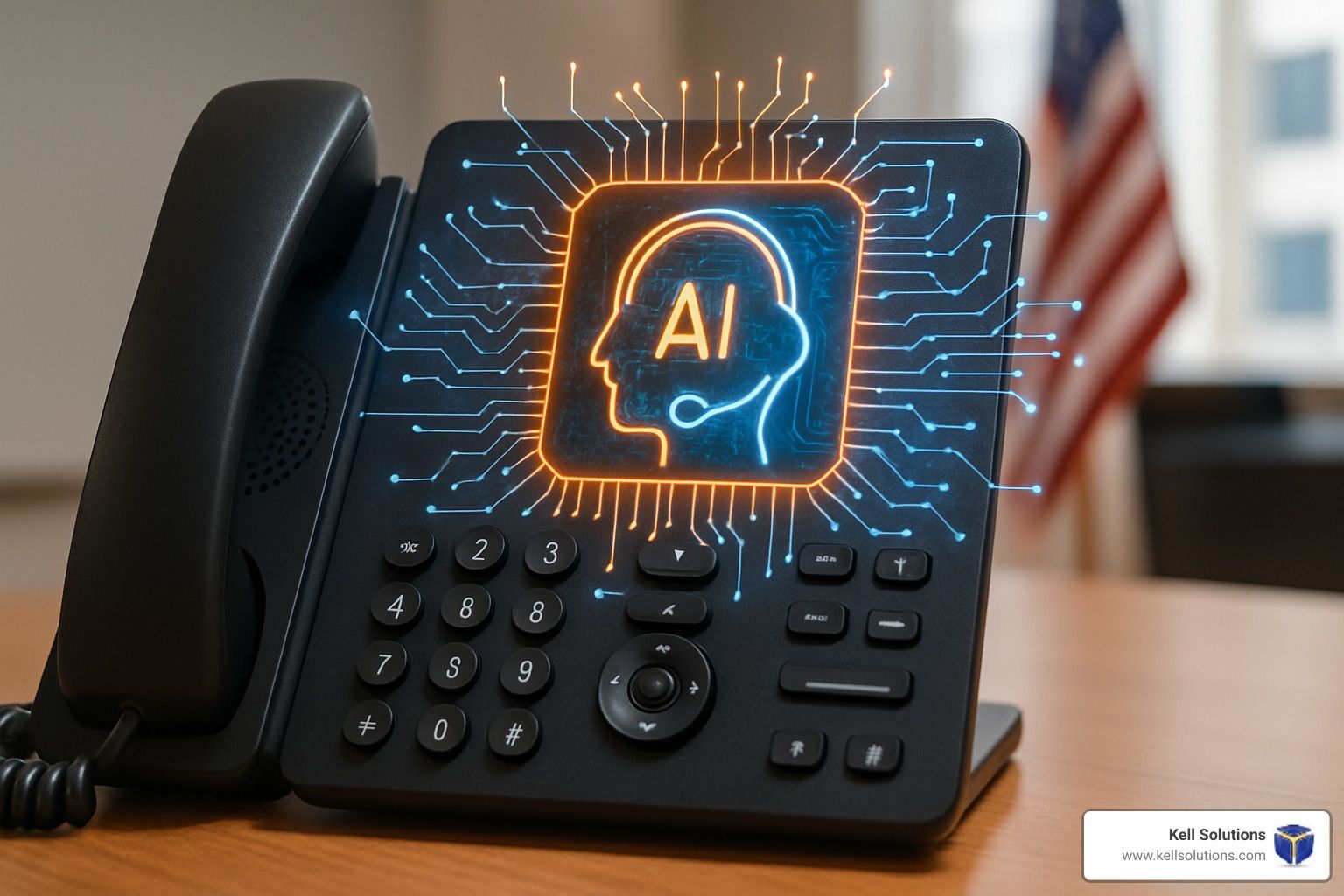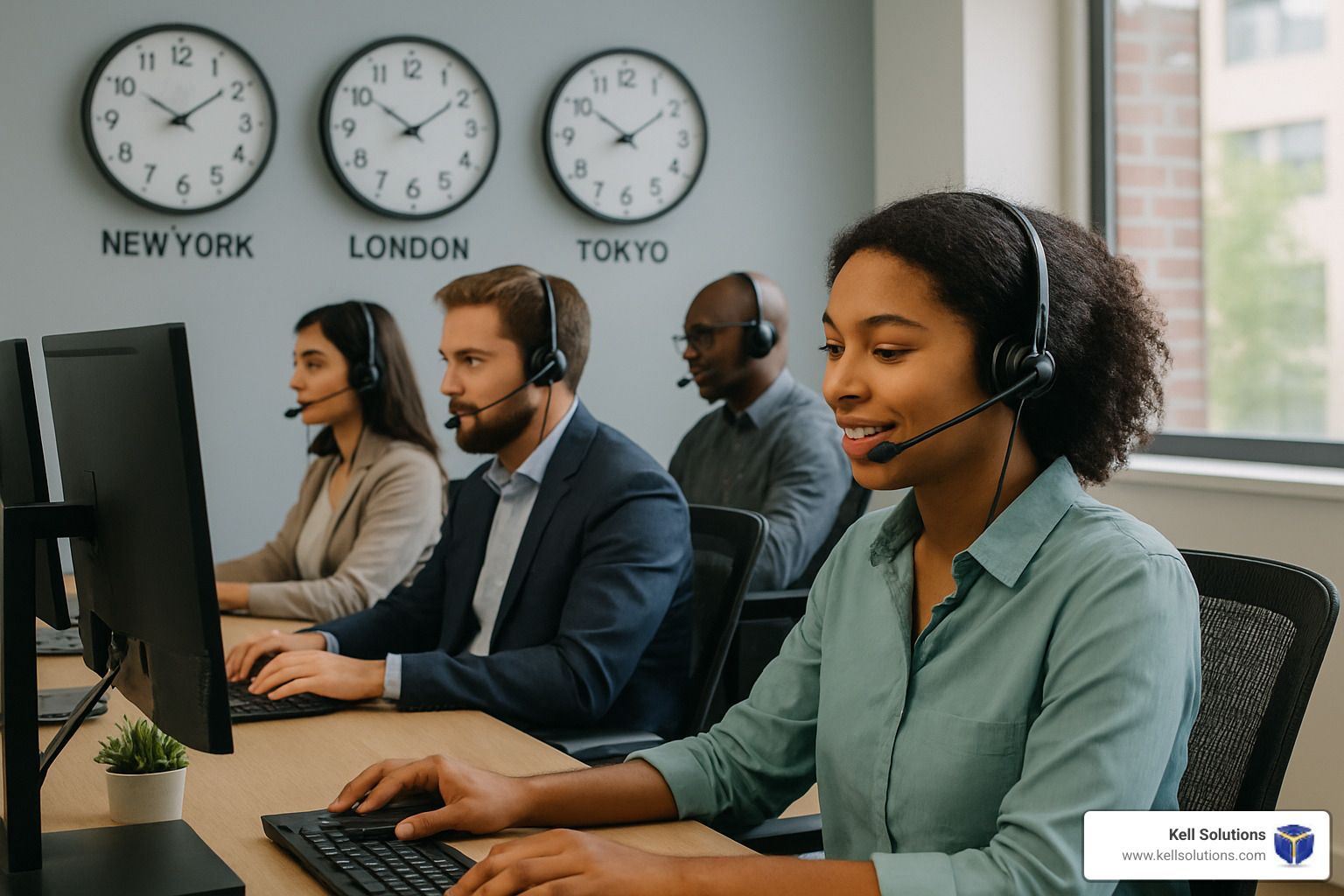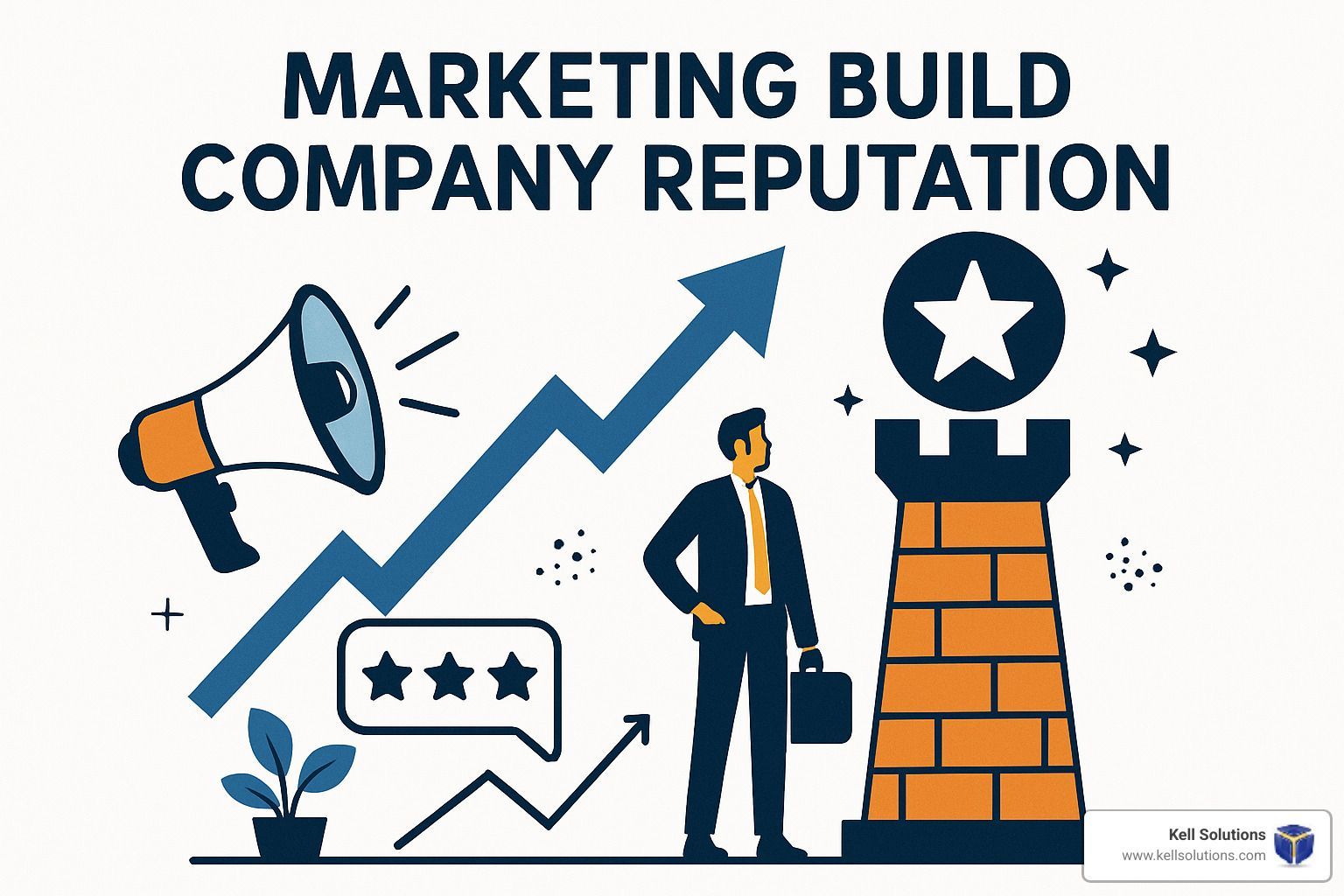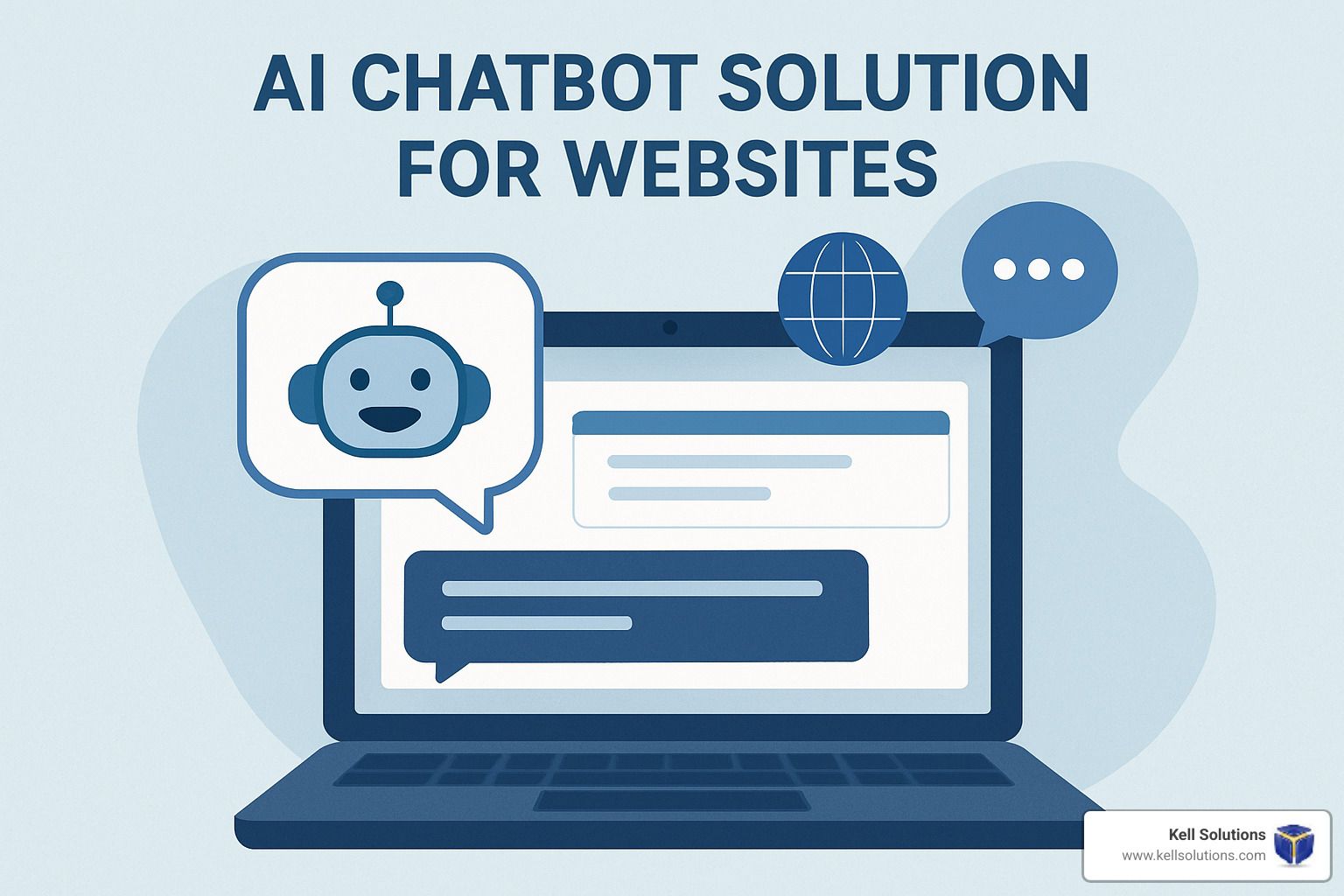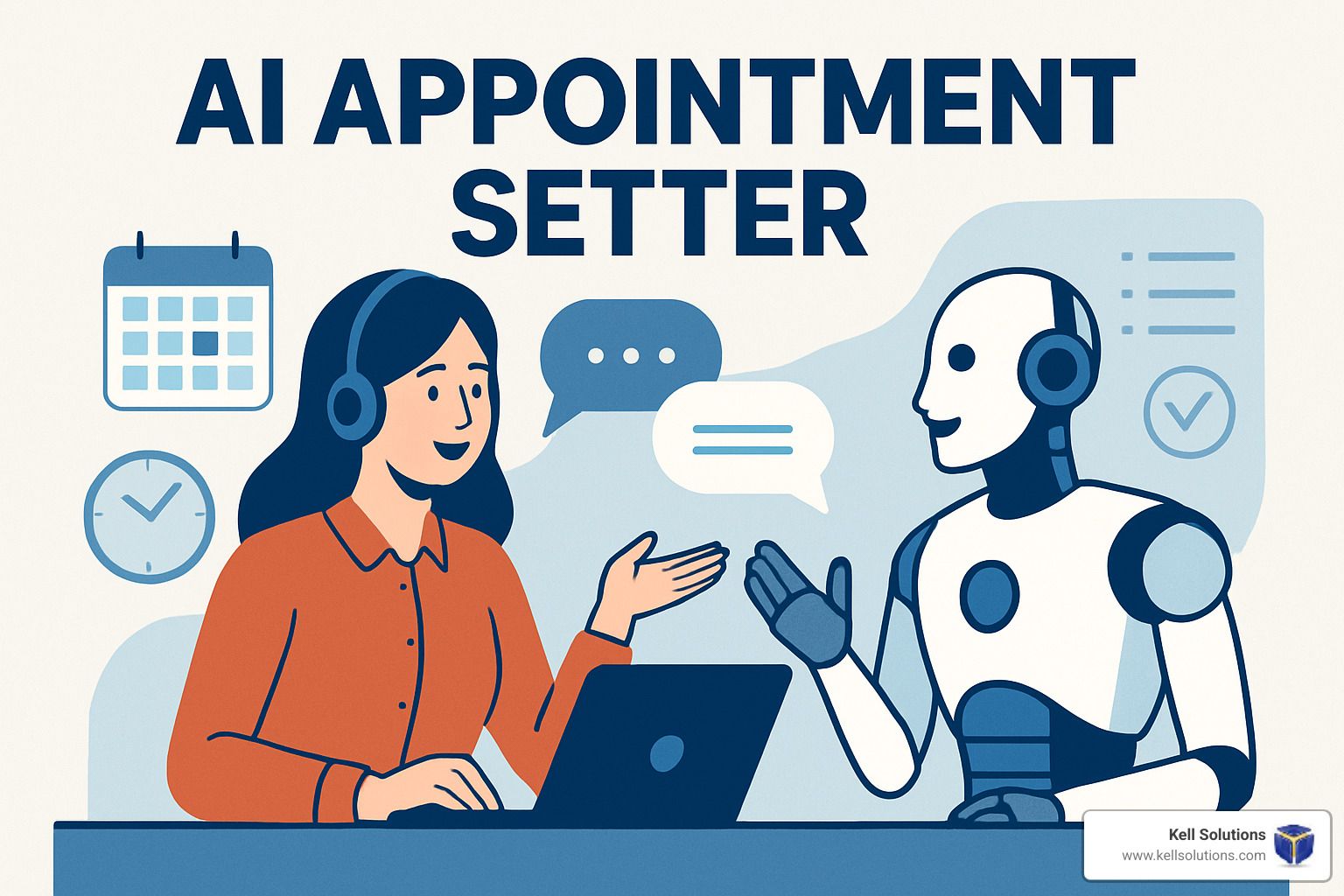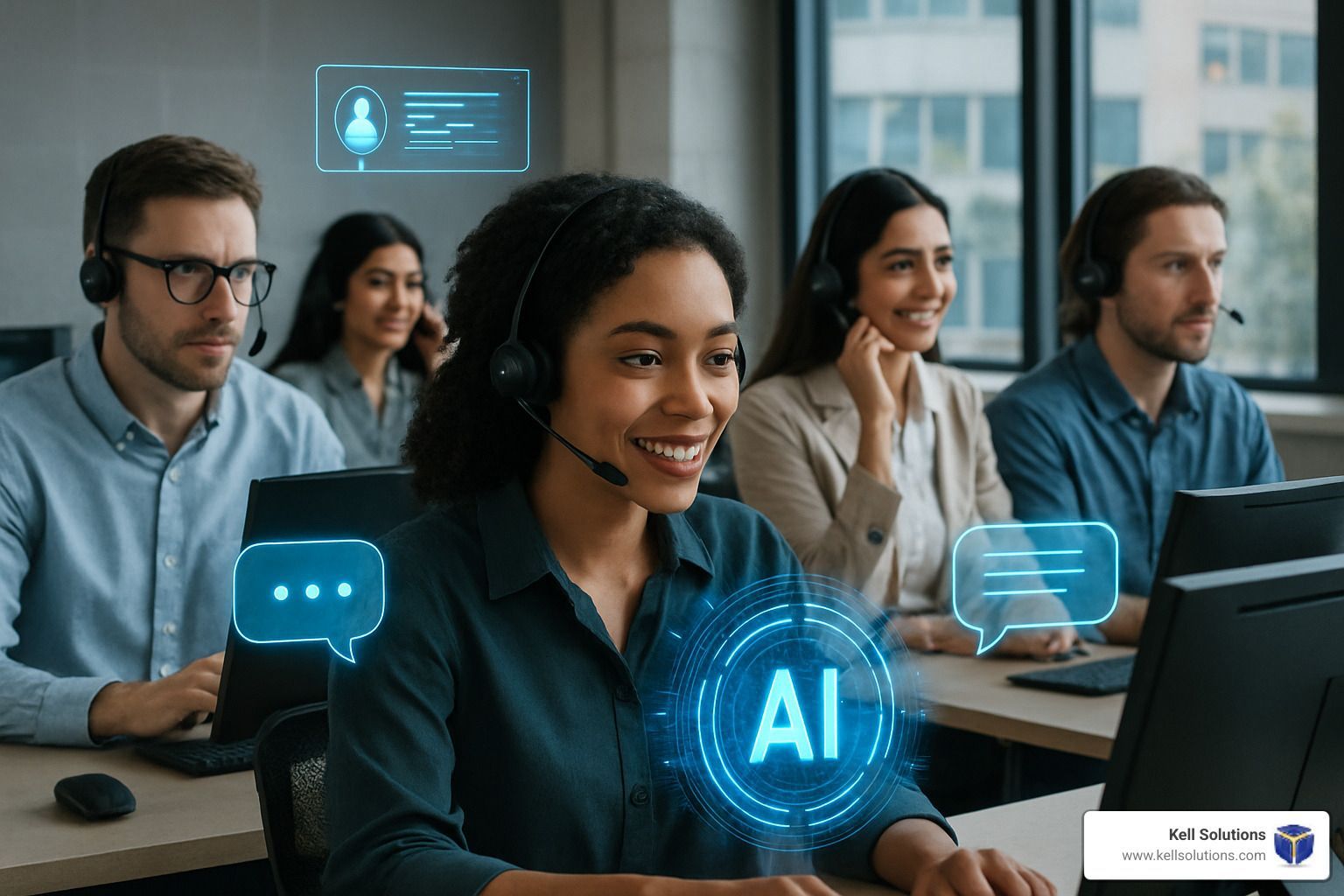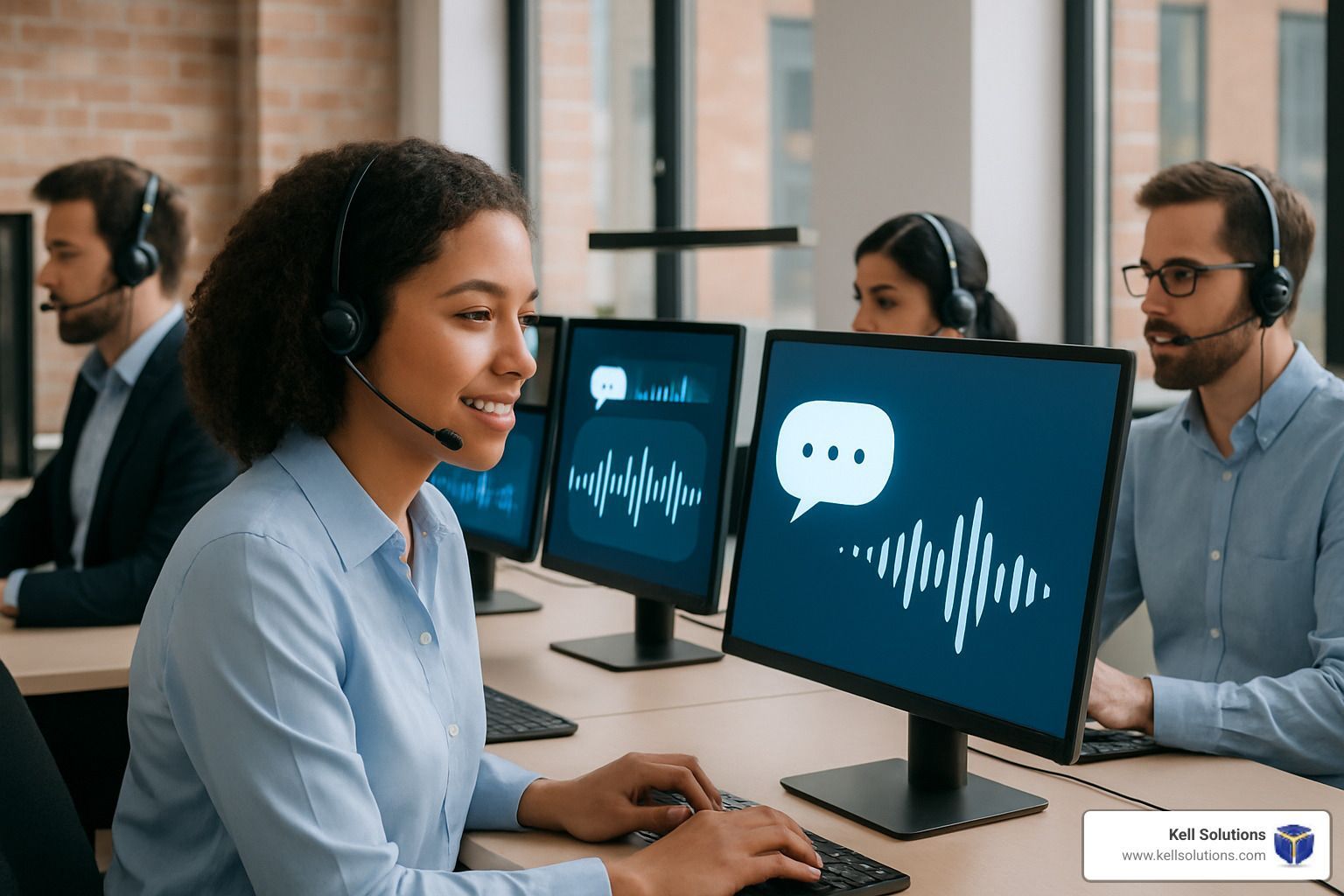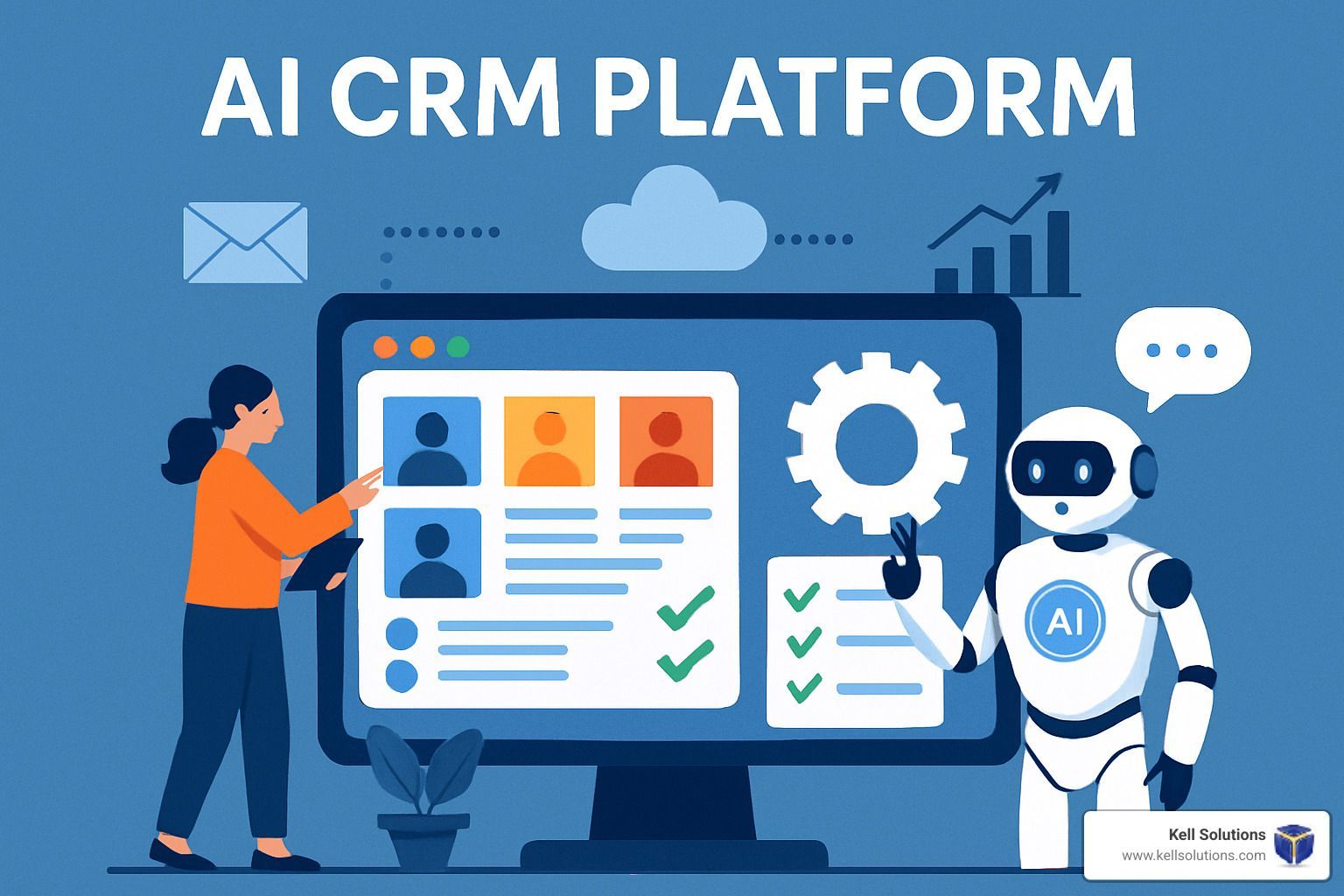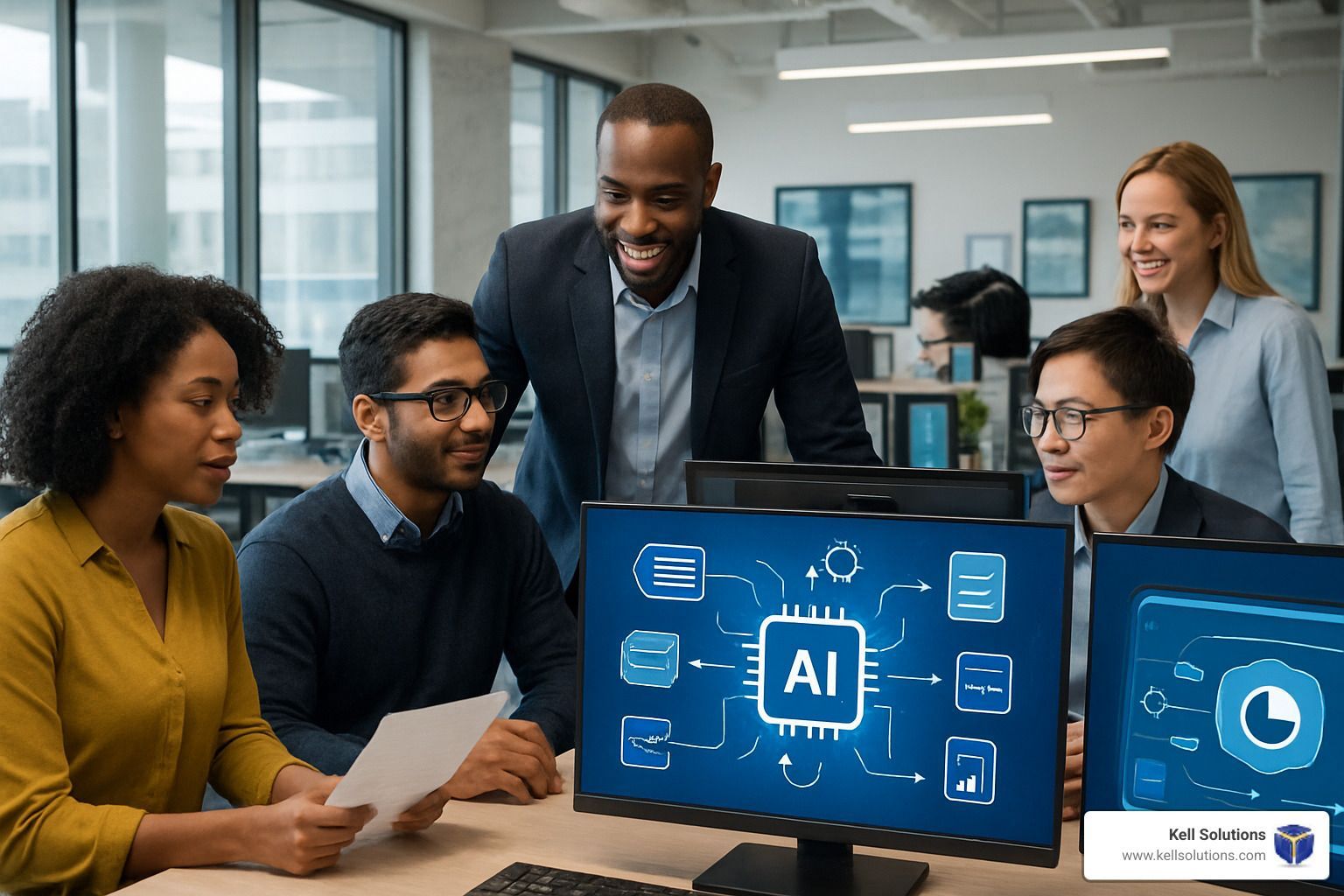Virtual Receptionist Benefits, Features & How They Work
Transforming Business Communications: A Complete Guide to AI-Powered Call Management, Cost Savings & 24/7 Customer Support

Article-at-a-Glance
- Virtual receptionists can save businesses over $45,000 annually while providing 24/7 professional call handling without the overhead of full-time employees.
- Modern virtual receptionist services like VoiceGenie AI combine sophisticated technology with customization options to create seamless caller experiences indistinguishable from in-house staff.
- Businesses using virtual receptionists report up to 35% more captured leads and 50% fewer missed appointments through automated follow-ups and calendar integration.
- The right virtual receptionist service can scale with your business needs, handling everything from basic call routing to complex appointment scheduling and CRM updates.
- Kell Web Solutions' VoiceGenie AI offers industry-leading virtual receptionist technology that transforms how businesses manage communications while maintaining a personal touch.
Imagine never missing another important call, slashing your overhead costs, and presenting a professional image 24/7—all while your team focuses on what truly matters. This isn't wishful thinking; it's the reality for businesses leveraging virtual receptionist services today.
In today's competitive landscape, how you handle incoming communications can make or break your business. Virtual receptionists have emerged as the smart solution for companies of all sizes looking to optimize operations without sacrificing customer experience. Kell Web Solutions has revolutionized this space with VoiceGenie AI, helping businesses transform their communication strategy while dramatically reducing costs.
Let's explore how virtual receptionists are changing the game for forward-thinking businesses and why they've become essential in today's competitive marketplace.
9 Game-Changing Benefits of Virtual Receptionists for Your Business
The advantages of implementing a virtual receptionist solution extend far beyond just answering phones. These sophisticated systems deliver measurable improvements across multiple aspects of your business operations, creating ripple effects that enhance both your bottom line and customer satisfaction.
24/7 Call Answering Without the Overtime Costs
One of the most compelling benefits of virtual receptionists is their ability to provide round-the-clock coverage without the premium costs associated with after-hours staffing. Unlike human receptionists who need sleep and weekends off, virtual solutions work continuously, ensuring you never miss an opportunity regardless of when it comes in. This constant availability means potential customers in different time zones or those who can only call outside business hours can still connect with your business, dramatically expanding your accessibility.
Save $45,000+ Annually on Salary and Benefits
The financial advantages of virtual receptionists are striking when compared to traditional in-house staff. With the average full-time receptionist commanding a salary between $30,000-$45,000 annually—before factoring in benefits, training, sick days, and vacation time—the total cost often exceeds $50,000 per year. Virtual receptionist services typically range from $150-$999 monthly, resulting in potential savings of over $45,000 annually. These savings allow businesses to reallocate resources to growth initiatives rather than administrative overhead.
Beyond direct salary savings, virtual receptionists eliminate costs associated with employee turnover, workplace equipment, and physical office space requirements. The financial equation becomes even more favorable when considering the productivity gains from uninterrupted workflow.
Never Miss Another Sales Opportunity
In business, responsiveness often determines whether a lead converts or disappears to a competitor. Studies show that companies responding to inquiries within five minutes are 100 times more likely to connect with a potential customer than those taking even 30 minutes. Virtual receptionists ensure every call is answered promptly, capturing critical information and qualifying leads even during your busiest periods or after hours.
This consistent responsiveness translates directly to improved conversion rates. Businesses using VoiceGenie AI report capturing up to 35% more leads compared to their previous systems, with particularly notable improvements in after-hours inquiries that previously went to voicemail (and often nowhere else).
Project Professionalism Regardless of Company Size
First impressions matter tremendously in business. A virtual receptionist allows even the smallest operation to present the polished, professional image typically associated with larger enterprises. Callers greeted by a courteous, efficient receptionist perceive your business as established and trustworthy, even if you're operating from a home office or have a minimal team.
This perceived professionalism extends beyond just answering calls. Modern virtual receptionists can seamlessly transfer calls, provide detailed information about your services, and handle initial customer inquiries with sophistication that enhances your brand perception. For growing businesses, this capability levels the playing field against larger competitors without requiring significant infrastructure investment.
Eliminate Interruptions That Kill Productivity
The productivity cost of interruptions is staggering. Research indicates it takes an average of 23 minutes to fully regain concentration after a disruption. In environments where team members must alternate between their primary responsibilities and answering phones, this constant task-switching can reduce overall productivity by up to 40%.
By implementing a virtual receptionist solution, you shield your team from these constant interruptions. Calls are handled professionally, messages are organized and delivered appropriately, and your staff can maintain focus on high-value tasks that drive your business forward. This protection of concentrated work time can effectively increase your team's productive capacity without adding headcount.
- Reduced stress from managing multiple priorities simultaneously
- Improved project completion rates due to fewer workflow disruptions
- Enhanced job satisfaction as employees focus on their core competencies
- More predictable workflow patterns and project timelines
- Decreased error rates from eliminated multitasking requirements
How Virtual Receptionists Transform Daily Operations
Beyond the broad benefits, virtual receptionists revolutionize specific operational aspects of your business. Their capabilities extend far beyond basic call answering, creating streamlined workflows that enhance efficiency across your entire organization.
Instant Call Handling and Professional Greetings
Virtual receptionists answer calls within seconds, eliminating the frustration customers experience when faced with endless rings or confusing auto-attendants. VoiceGenie AI, for instance, picks up within 2-3 seconds of the first ring, greeting callers with a warm, professional introduction customized to your brand voice. This immediate response creates a positive first impression that sets the tone for the entire customer interaction.
The greeting itself can be tailored to reflect your company culture—whether formal and corporate or casual and conversational. This customization ensures callers experience consistent brand messaging from their very first contact, reinforcing your company identity and values with every interaction.
Intelligent Call Routing Based on Customer Needs
Advanced virtual receptionists go beyond simple call transfers by implementing sophisticated routing logic based on caller needs. Through intelligent question sequences, systems like VoiceGenie AI can determine the nature of each call and direct it appropriately—whether to sales, support, billing, or specific team members. This smart routing ensures callers reach the right person the first time, eliminating the frustration of multiple transfers.
For businesses with specialized departments or expertise areas, this capability is invaluable. A construction company, for example, might route emergency repair requests directly to field technicians while scheduling inquiries go to the planning team. This precision creates efficiency for both your team and your customers.
Appointment Scheduling That Syncs with Your Calendar
Manual appointment scheduling is notoriously time-consuming and error-prone. Virtual receptionists eliminate this burden through direct integration with your business calendars. When a caller requests an appointment, the system can instantly check availability across your team, offer appropriate time slots, confirm selections, and send automatic confirmations and reminders.
The impact on appointment reliability is substantial. Businesses using VoiceGenie AI report reducing no-shows by up to 50% through automated SMS reminders and confirmation requests. This functionality not only saves administrative time but also maximizes your team's productive capacity by ensuring schedules remain filled with confirmed appointments.
Message Taking and Delivery to the Right Team Members
When calls require human follow-up, virtual receptionists excel at capturing detailed messages and routing them appropriately. Rather than generic "someone called about pricing" notes, advanced systems capture specific inquiry details, contact information, priority levels, and even caller sentiment. These comprehensive messages are then delivered through your preferred channels—email, SMS, or directly to your CRM—ensuring nothing falls through the cracks.
This structured approach to message management eliminates the guesswork from follow-ups. Your team receives clear, actionable information that allows them to prepare appropriately before returning calls, leading to more efficient conversations and faster issue resolution.
Lead Capture That Feeds Directly Into Your CRM
Converting inquiries into actionable sales opportunities requires systematic data capture and management. Virtual receptionists transform casual calls into structured lead records by gathering key qualification information and feeding it directly into your CRM system. This automation eliminates manual data entry, reduces transcription errors, and ensures consistent lead processing regardless of who answers the call.
For sales teams, this integration creates a seamless lead management pipeline. New opportunities appear in your system in real-time, complete with notes about specific interests, budget parameters, and timeline expectations. This immediate visibility allows for faster follow-up while the prospect's interest is at its peak, significantly improving conversion rates.
Virtual Receptionist Features Worth Every Penny
Not all virtual receptionist solutions offer the same capabilities. Understanding the features that deliver the most value helps ensure you select a solution that addresses your specific business needs while providing maximum return on investment.
Customized Call Scripts That Match Your Brand Voice
The most effective virtual receptionists don't sound generic—they sound like an extension of your team. Premium services like VoiceGenie AI allow extensive customization of call scripts, greeting styles, and conversation flows to precisely match your brand personality. This tailoring extends beyond simple greetings to include how questions are phrased, what terminology is used, and how information is presented, making virtual receptionists indispensable tools for modern businesses.
This customization capability ensures callers experience consistent messaging whether they're speaking with your virtual receptionist or your in-house team. The resulting brand continuity strengthens your market positioning and reinforces the professional image you've worked hard to establish.
Multilingual Support for Diverse Customer Bases
In our increasingly global marketplace, language capabilities can significantly expand your addressable market. Advanced virtual receptionist systems offer multilingual support, allowing callers to interact in their preferred language without requiring you to staff multilingual receptionists. VoiceGenie AI, for example, supports over a dozen languages with natural, native-sounding conversations rather than awkward translations.
Real-Time Reporting and Call Analytics
Data-driven decision making requires visibility into your communication patterns. Premium virtual receptionist services provide comprehensive analytics dashboards showing call volumes, peak times, common inquiry types, resolution rates, and other critical metrics. This intelligence allows you to identify trends, allocate resources efficiently, and continuously refine your customer communication strategy.
These insights often reveal surprising patterns that would otherwise remain hidden. Many businesses discover specific days or times when certain inquiry types spike, allowing them to proactively staff those periods with specialized team members. Others identify recurring questions that could be addressed through website improvements or proactive customer education.
Seamless CRM and Calendar Integration
The true power of virtual receptionists emerges when they connect with your existing business systems. Integration with your CRM platforms, scheduling tools, project management software, and communication systems creates a cohesive ecosystem where information flows automatically between systems. This connectivity eliminates data silos and manual transfers, ensuring everyone on your team works from the same accurate, up-to-date information.
The Technology Behind Virtual Receptionist Services
Understanding the technological foundation of virtual receptionist services helps businesses appreciate why these solutions perform so effectively. Modern systems leverage several advanced technologies to deliver experiences that often surpass traditional human reception.
AI-Powered Conversation Capabilities
At the heart of today's most sophisticated virtual receptionists is artificial intelligence technology specifically designed for natural language processing. Systems like VoiceGenie AI utilize machine learning algorithms that understand context, recognize intent, and respond appropriately to a wide range of caller inquiries. Unlike rigid IVR systems of the past, these AI engines can handle unexpected questions, interruptions, and conversational nuances that make interactions feel natural.
The AI technology continues learning from each interaction, gradually expanding its knowledge base and refining its responses. This continuous improvement means the system becomes increasingly effective over time, adapting to your specific caller patterns and common inquiries without requiring manual updates or programming.
Cloud-Based Systems for Ultimate Reliability
Modern virtual receptionists operate on robust cloud infrastructure, ensuring nearly perfect uptime and accessibility. This distributed architecture means your reception capability remains operational even during local power outages, internet disruptions, or other emergencies that might affect your physical location. For businesses where continuous availability is critical, this reliability represents a significant advantage over traditional reception arrangements.
Cloud deployment also enables seamless scaling as your call volumes grow. Whether you're handling 10 calls daily or 1,000, the system adjusts automatically without requiring hardware upgrades or technical reconfiguration. This elasticity ensures consistent performance during seasonal peaks or sudden publicity surges that might otherwise overwhelm traditional reception resources.
Security Protocols That Protect Customer Information
Reputable virtual receptionist providers implement enterprise-grade security measures to protect sensitive caller information. These systems employ end-to-end encryption, secure data storage practices, and strict access controls to maintain privacy and compliance with relevant regulations. For businesses in industries with specific compliance requirements like healthcare or financial services, specialized virtual receptionists offer HIPAA or PCI-compliant implementations.
Beyond technical safeguards, leading providers maintain comprehensive security certifications and undergo regular third-party audits to verify their protection measures. This ongoing verification ensures your caller data receives the same level of protection as your internal systems, minimizing risk exposure while maximizing operational benefits.
Setting Up Your Virtual Receptionist Service
Implementing a virtual receptionist solution is significantly simpler than hiring and training in-house staff. Most services follow a structured implementation process designed to capture your requirements and customize the system to your specific needs.
1. Choose Between AI or Human-Powered Options
The first implementation decision involves selecting between AI-powered virtual receptionists, human-staffed services, or hybrid models that combine both approaches. AI solutions like VoiceGenie offer consistent 24/7 availability with perfect adherence to your scripts and protocols. Human-powered services provide the nuanced emotional intelligence of real people but often at higher cost points and with more limited availability. Many businesses find that AI solutions handle the majority of routine calls exceptionally well, potentially complemented by human agents for specific complex scenarios.
2. Define Your Call Handling Requirements
Successful implementation requires clearly documenting your call handling preferences and business rules. This process typically involves mapping out common caller scenarios, defining appropriate responses, and establishing routing protocols based on inquiry type. Most providers offer templates and guidance to help you think through these requirements systematically, ensuring all common situations are addressed before your system goes live.
This planning stage also includes determining information collection requirements—what details should be gathered from callers in different scenarios, what qualifies as an emergency, and what authorization processes might apply for sensitive information requests. Thorough planning at this stage significantly enhances the effectiveness of your virtual receptionist implementation.
3. Create Custom Scripts and Protocols
With your requirements documented, the next step involves developing the specific language, scripts, and conversation flows your virtual receptionist will use. This customization ensures the system accurately represents your brand voice and handles inquiries according to your preferences. Most providers offer script templates that can be tailored to your specific needs, simplifying this process while ensuring conversational effectiveness.
For AI-powered systems like VoiceGenie, this stage also includes training the system on your specific terminology, service offerings, and common customer questions. By uploading existing FAQ documents, website content, and service descriptions, you accelerate the AI's learning process and enhance its response accuracy from the first call.
4. Connect With Your Existing Systems
Integration with your business systems amplifies the value of your virtual receptionist implementation. Connecting your CRM, scheduling software, ticketing system, and other operational tools creates a seamless information flow that eliminates manual data entry and ensures consistent customer experiences. Most leading providers offer pre-built integrations with popular business platforms, simplifying this technical aspect of implementation.
During this stage, you'll also configure notification preferences—how and when you'll receive call summaries, messages, and alerts about specific caller situations. These settings ensure you maintain appropriate visibility and control while eliminating unnecessary interruptions.
5. Test and Refine the Setup
Before full deployment, comprehensive testing ensures your virtual receptionist handles calls exactly as intended. This testing phase typically involves simulating various caller scenarios to verify proper greeting, information collection, routing, and follow-up actions. Based on these tests, you can refine scripts, adjust routing logic, and optimize the overall caller experience before going live.
Even after initial deployment, ongoing refinement maximizes system effectiveness. The best implementations include regular reviews of call recordings or transcripts, analysis of performance metrics, and continuous adjustments based on caller feedback and changing business needs.
Virtual Receptionist Success Stories Across Industries
The transformative impact of virtual receptionists becomes most apparent through real-world implementation stories. Businesses across various sectors have achieved remarkable results by strategically deploying these solutions.
How a Small Law Firm Captured 35% More Clients
Davidson & Associates, a three-attorney family law practice, struggled with managing incoming calls while attorneys were in court or client meetings. After implementing a virtual receptionist, the firm saw immediate improvements in lead capture. The virtual receptionist qualified potential clients 24/7, scheduling consultations directly into the attorneys' calendars while gathering critical case details that allowed for better preparation. Within six months, the firm's new client acquisition increased by 35%, with particularly strong growth in after-hours inquiries that previously went to voicemail. The technology paid for itself within the first month through just two additional client retainers.
Medical Practice Reduces No-Shows by 50%
Mountainview Medical Group implemented a virtual receptionist solution primarily to manage their growing call volume without adding staff. An unexpected benefit emerged in their appointment reliability metrics. The system's automated appointment confirmation and reminder capabilities dramatically reduced no-shows and late cancellations.
By sending automated SMS reminders 48 hours before appointments with simple confirmation requests, the practice achieved a 50% reduction in missed appointments. This improvement alone added approximately 15 productive appointment slots weekly without requiring additional marketing or patient acquisition efforts.
The virtual receptionist also excelled at rescheduling, offering patients immediate alternative times when they needed to change appointments. This capability converted what would have been cancellations into rescheduled visits, maintaining the practice's revenue while improving patient satisfaction through greater flexibility.
The financial impact proved substantial for the practice's bottom line. With each appointment slot valued at approximately $150-$300 in billable services, the reduction in no-shows translated to an additional $2,250-$4,500 in weekly revenue without increasing overhead costs.
- 50% reduction in missed appointments through automated reminders
- 72% of cancellations successfully converted to rescheduled appointments
- 90-second average handling time for appointment changes (vs. 4.5 minutes previously)
- 98% patient satisfaction rating with the new scheduling system
- $10,000+ monthly revenue increase from improved schedule utilization
Home Service Business Expands Without Adding Staff
Northwest Plumbing & Heating, a growing residential service provider, faced a common scaling challenge—their reputation was generating more calls than their office could handle, resulting in missed opportunities and delayed responses during peak seasons. Implementing a virtual receptionist, like VoiceGenie AI, as their virtual receptionist solution allowed them to efficiently manage their growing call volume while keeping their administrative team size constant. The system handled initial call screening, emergency prioritization, and appointment scheduling, enabling the company to expand from serving three counties to seven without adding office staff. Their emergency response time improved by 37%, while their scheduling backlog decreased despite serving twice the geographic area.
Choose the Perfect Virtual Receptionist for Your Needs
With numerous providers offering varying capabilities at different price points, selecting the right virtual receptionist requires careful evaluation of your specific business requirements. The ideal solution aligns with your call volume, complexity, integration needs, and budget constraints while delivering tangible operational improvements.
Key Questions to Ask Before Signing Up
Thoroughly vetting potential virtual receptionist providers helps ensure you select a solution that truly meets your needs. Start by asking about their experience with businesses in your specific industry—providers with relevant experience understand your terminology, common caller scenarios, and compliance requirements. This industry-specific expertise dramatically accelerates implementation and improves caller experiences.
Technical capabilities represent another critical evaluation area. Investigate the provider's integration capabilities with your existing systems, their reliability metrics (uptime guarantees), and their security certifications. For AI-powered solutions like VoiceGenie, inquire about natural language processing capabilities, accent handling, and continuous learning mechanisms that improve performance over time.
Red Flags That Signal Poor Service Quality
Certain warning signs indicate providers that might deliver subpar experiences. Be wary of services that cannot provide recent client references or case studies demonstrating results for businesses similar to yours. These gaps often indicate limited real-world experience or customer satisfaction issues they prefer not to highlight.
Contract terms that impose lengthy commitments without trial periods suggest potential confidence issues in their own service quality. Reputable providers typically offer shorter initial terms or trial periods that allow you to verify performance before making longer commitments. Similarly, unclear pricing structures with numerous hidden fees or complex calculations often lead to unpleasant surprises on monthly invoices.
Pricing Models Explained: Per Minute vs. Monthly Plans
Virtual receptionist services typically employ either usage-based pricing (per minute or per call) or flat monthly subscriptions with varying service tiers. Usage-based models offer flexibility for businesses with highly variable call volumes, allowing costs to scale directly with activity. These plans work well for seasonal businesses or those just beginning to explore virtual reception options without committing to higher fixed costs.
Flat-rate subscription models provide budgeting predictability and often deliver better value for businesses with consistent call patterns. These plans typically include a specified number of minutes or calls monthly, with clear overage rates for exceptional periods. For most established businesses, subscription models offer the optimal balance of predictable costs and comprehensive service coverage, particularly when they include features like CRM integration and appointment scheduling without additional fees.
Your Next Steps to Reception Excellence
Implementing a virtual receptionist solution represents a strategic business decision that can dramatically improve customer experience, operational efficiency, and bottom-line results. The implementation process is straightforward but benefits from thoughtful preparation to maximize your return on investment.
- Audit your current call handling process to identify specific pain points and opportunities
- Document your ideal call flows, including information collection requirements and routing logic
- Research providers with specific experience in your industry vertical
- Request demonstrations focused on your most common caller scenarios
- Start with a focused implementation addressing your highest-value call types
Most businesses begin seeing measurable improvements within the first week of implementation, with full optimization typically achieved within 30-45 days as the system learns your specific requirements and caller patterns. The combination of immediate operational benefits and continuous improvement creates compelling long-term value that strengthens your competitive position.
Remember that successful implementation isn't just about technology—it's about strategically rethinking how your business manages communications to create exceptional experiences while optimizing resource utilization. The most successful deployments view virtual receptionists as strategic assets rather than mere cost-cutting tools.
Frequently Asked Questions
As you consider implementing a virtual receptionist solution, you likely have specific questions about how these systems work in practice. These common questions address the most frequent concerns businesses express during their evaluation process.
What's the difference between a virtual receptionist and an answering service?
While sometimes used interchangeably, virtual receptionists and answering services represent distinctly different solutions with varying capabilities. Traditional answering services typically focus on basic message-taking during off-hours or overflow periods, with limited ability to handle complex interactions or integrate with your business systems. These services essentially function as human voicemail, capturing caller information for later follow-up.
Virtual receptionists, particularly AI-powered solutions like VoiceGenie, provide comprehensive call management capabilities that extend far beyond simple message-taking. They can schedule appointments, answer common questions, qualify leads, route calls intelligently, and integrate deeply with your CRM and operational systems. The distinction is similar to comparing a temporary assistant who takes notes versus a trained team member who can independently handle complete caller interactions.
This capability difference directly impacts caller experience and operational value. While answering services might cost less initially, they typically deliver significantly less functionality and require more follow-up work from your team to resolve caller needs.
Virtual Receptionist vs. Answering Service: Key Differences
- Capabilities: Virtual receptionists handle complete interactions (scheduling, questions, routing) while answering services typically just take messages
- Technology: Modern virtual receptionists leverage AI and integration capabilities; answering services rely primarily on human operators with basic tools
- Availability: AI-powered virtual receptionists offer true 24/7/365 service; answering services often have limited hours or reduced weekend coverage
- Branding: Virtual receptionists can be fully customized to your brand voice; answering services typically use generic scripts across multiple clients
- Integration: Virtual receptionists connect with your business systems; answering services typically deliver messages via email or text only
Can virtual receptionists handle complex customer inquiries?
The complexity-handling capabilities of virtual receptionists have advanced dramatically in recent years. Modern AI-powered solutions like VoiceGenie can manage multi-step conversations, understand context, and navigate unexpected tangents while maintaining conversational coherence. For industry-specific terminology and scenarios, these systems can be trained on your particular business vocabulary and common situations, enabling them to handle approximately 80-85% of routine inquiries without human intervention. For the remaining complex scenarios requiring human judgment, well-designed systems seamlessly transfer to appropriate team members with complete context about the conversation to that point.
How quickly can I get a virtual receptionist service up and running?
Implementation timelines vary based on system complexity and customization requirements, but most businesses can deploy a functional virtual receptionist within 1-2 weeks. Basic implementations focusing on greeting and routing can often be operational within 24-48 hours, while more sophisticated setups with extensive integrations and custom workflows typically require 7-14 days for proper configuration and testing. The most efficient implementations begin with core functionality and then expand capabilities progressively, allowing you to realize immediate benefits while building toward comprehensive coverage of all call scenarios.
Will my customers know they're speaking with a virtual receptionist?
With today's advanced virtual receptionist technology, most callers cannot distinguish between AI systems and human receptionists during routine interactions. Solutions like VoiceGenie AI incorporate natural speech patterns, appropriate pauses, conversational acknowledgments, and even subtle background office sounds that create an authentic experience. While some businesses choose to disclose that callers are interacting with an AI assistant (often framed as their "digital receptionist"), many find that the experience is so natural that disclosure isn't necessary or relevant to the caller experience.
How do virtual receptionists handle after-hours emergencies?
Virtual receptionists excel at emergency handling through predefined protocols that identify urgent situations and trigger appropriate responses. These systems can be programmed to recognize emergency keywords, caller tone, or specific request patterns that indicate urgency. When emergencies are detected, the system can immediately escalate through multiple channels—sending SMS alerts to on-call staff, creating high-priority tickets in your service system, or even directly connecting callers to designated emergency responders.
For businesses where emergency response is critical, virtual receptionists often outperform traditional solutions by eliminating human delay factors and consistently executing established protocols. Many service businesses report significant improvements in emergency response times after implementing virtual receptionist solutions with properly configured urgency detection and escalation rules.
Ready to transform your business communications with a virtual receptionist solution? Kell Web Solutions offers industry-leading technology that combines AI-powered conversation capabilities with deep integration options, providing the perfect balance of efficiency and personalization for your callers.


Orange County HVAC Google AI Overview Domination: 7 Proven Strategies to Capture Featured AI Results
